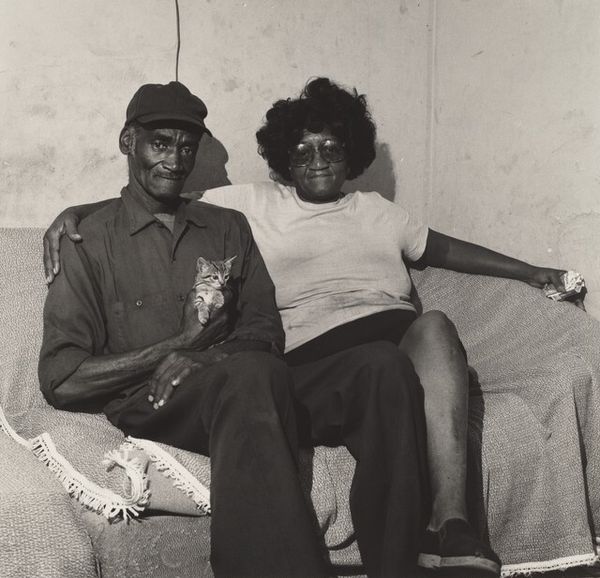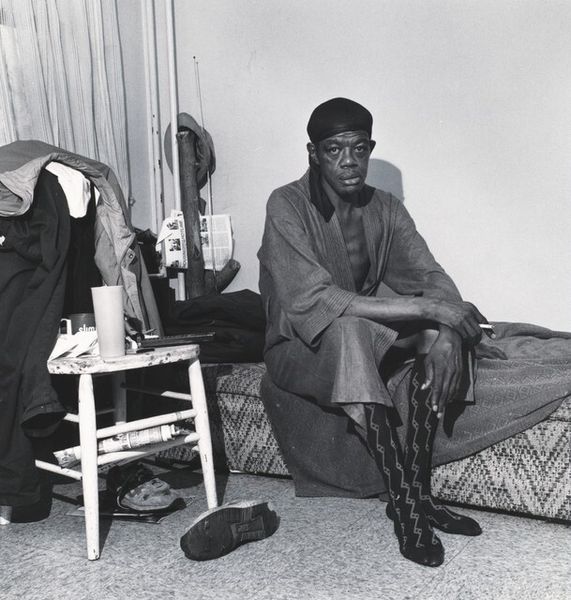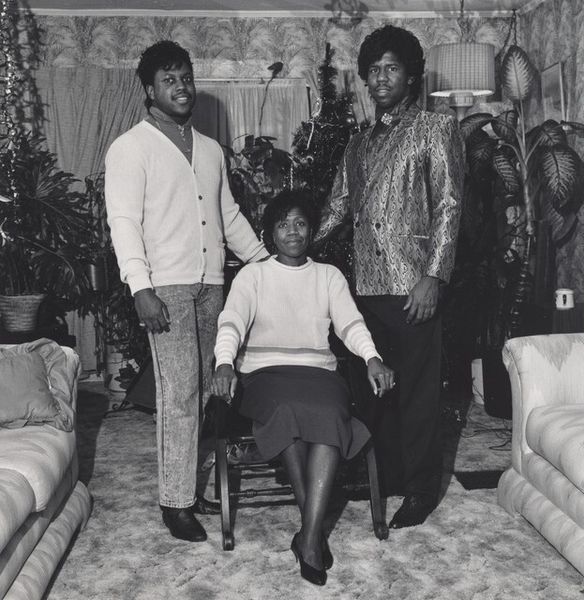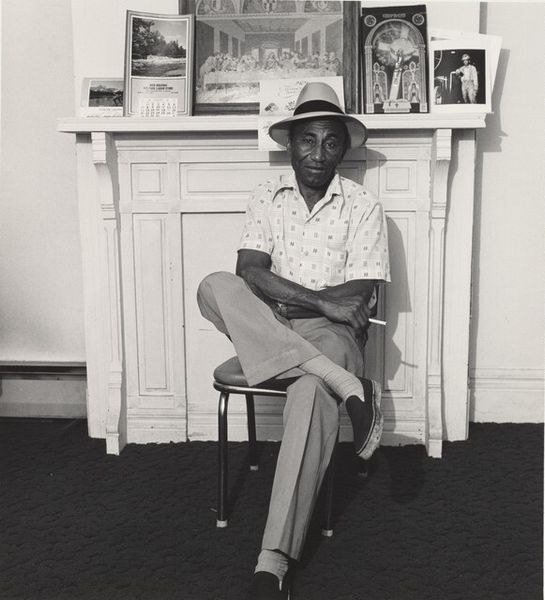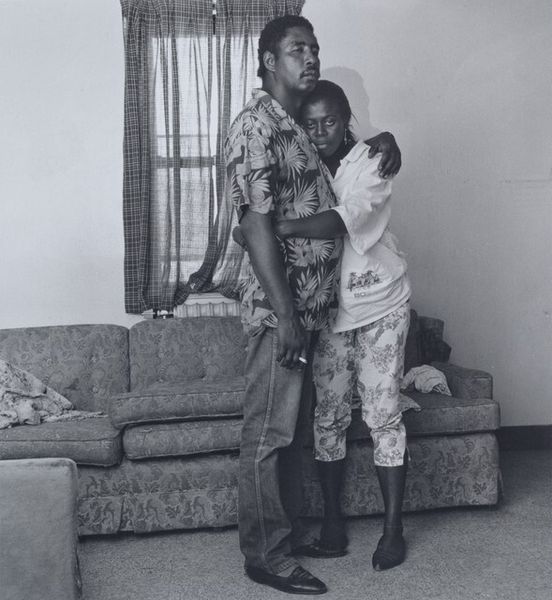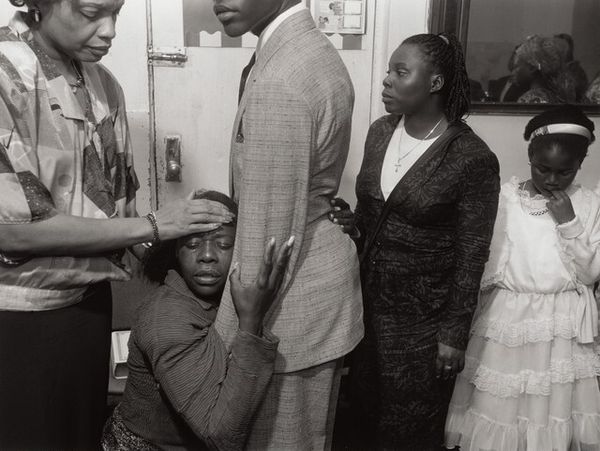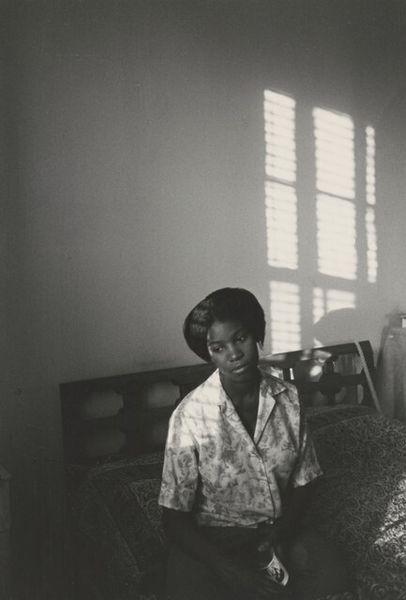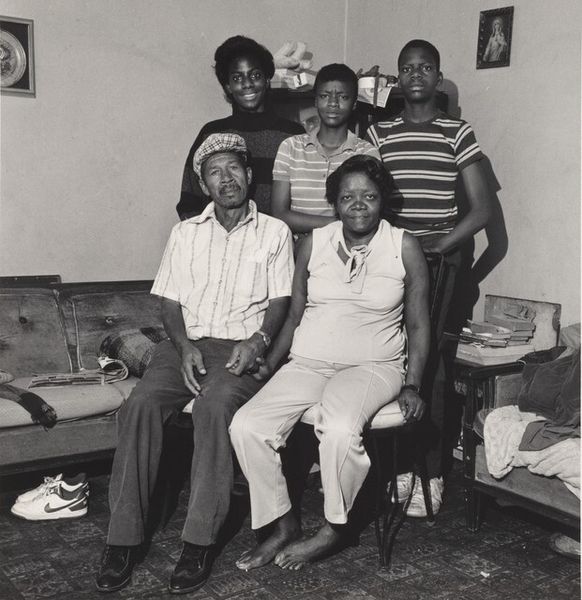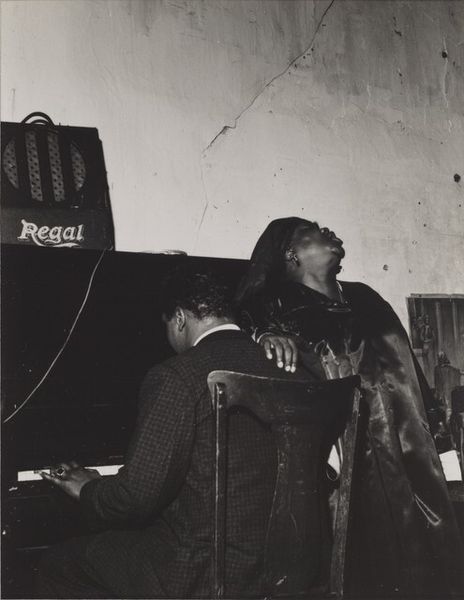
photography, gelatin-silver-print
#
portrait
#
black and white photography
#
social-realism
#
photography
#
black and white
#
gelatin-silver-print
#
monochrome photography
#
ashcan-school
#
monochrome
#
monochrome
Dimensions: image: 17.6 x 17.7 cm (6 15/16 x 6 15/16 in.) sheet: 25.3 x 20.3 cm (9 15/16 x 8 in.)
Copyright: National Gallery of Art: CC0 1.0
Editor: This is Milton Rogovin's "Atlas Steel Casting (Working People series)," a gelatin-silver print from 1976-77. I’m struck by the subjects’ direct gaze and their relaxed yet dignified pose on that patterned couch. How do you interpret this work in terms of its social context? Curator: This image is a powerful testament to Rogovin’s commitment to documenting the lives of working-class Americans. Consider the title, "Atlas Steel Casting." Atlas was burdened with the world on his shoulders. How might these individuals, photographed in their own domestic space, also be bearing a weight, a social weight perhaps? Editor: That's an interesting way to look at it, the burden of labor maybe? Is he drawing a parallel between the mythic figure and these steel workers? Curator: Exactly. Rogovin often focused on those marginalized by society, providing visibility and challenging the dominant narrative. The black and white medium adds to this effect, stripping away distractions and focusing our attention on their faces and posture. Note the gaze you mentioned, direct and unflinching, demanding to be seen and acknowledged. How does that gaze make you feel? Editor: It’s almost confrontational but in a quiet way. I feel a sense of respect, and also responsibility, as a viewer. I hadn't considered the choice of black and white adding to the seriousness of the photograph. Curator: Rogovin saw his work as a form of social activism, using the camera to amplify the voices of the unheard. This image transcends a simple portrait. It prompts us to reflect on class, labor, and the often-invisible struggles of ordinary people, and their representation or lack thereof. Editor: Thinking about the sitters in this context really enriches my understanding, it is more than just a picture, it is also about giving recognition. Thanks, this has opened up new ways for me to consider documentary photography. Curator: And for me too; your initial impressions helped clarify my thoughts on the power of directness in Rogovin's photography and how that gaze evokes responsibility in the viewer.
Comments
No comments
Be the first to comment and join the conversation on the ultimate creative platform.
